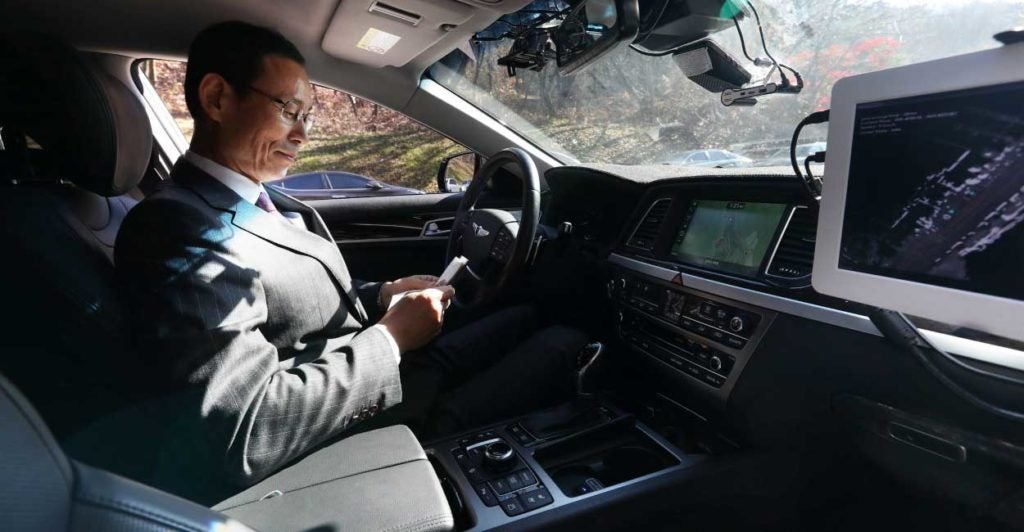With self-driving cars currently in development and plans for public release within the next five years, lawmakers are busy examining the role of the state and federal government in creating and implementing regulations.
At an Energy and Commerce Committee hearing in February, lawmakers and witnesses highlighted the importance of consistent, streamlined regulation.
Gill Pratt, executive technical adviser at Toyota Motor Corp. and CEO of the Toyota Research Institute, and a witness at the hearing, said, “Under a patchwork of inconsistent state laws, autonomous vehicles technology may meet performance requirements in one state, and not in another state.”
Pratt advocated a federal regulatory structure, saying, “Policymakers should work to promote and advance a single, national framework with appropriate safeguards.”
Anders Karrberg, vice president of government affairs for Volvo Cars, reiterated the necessity of federal guidelines, saying, “In just the last two months, at least 50 new bills have been introduced in 20 states. This started to become a problem already in 2015, when we publicly called for federal guidelines.”
In 2016, the Federal Automated Vehicles Policy was enacted. The policy “outlines a 15-point ‘safety assessment’ for the safe design, development, testing, and deployment of automated vehicles.” In addition, it recommends policies for states to consider, “with a goal of generating a consistent national framework” for testing and development of self-driving vehicles, according to the National Highway Traffic Safety Administration.
Karrberg said the policy is “a very positive initiative, even if it needs several improvements.”
The Federal Automated Vehicles Policy is an evolving policy, according to the Department of Transportation website: “Going forward, we will conduct significant public outreach to inform our next update to this policy. We very much look forward to the dialogues that will emerge in the coming weeks and months.”
Pratt said he supports changes to the Federal Automated Vehicles Policy. He said that “there are several areas that should be addressed before the policy is fully implemented. This includes clarifying in the [Federal Automated Vehicles Policy] itself that [the National Highway Traffic Safety Administration] does not intend for states to regulate vehicle performance.”
Karrberg and Mike Ableson, vice president of global strategy for General Motors Co., also stressed the potential benefits this technology could provide to humanity.
“Such vehicles will provide unprecedented access to transportation to those who need it most, like people with disabilities, those in underserved neighborhoods with limited access to public transportation, and the elderly,” Ableson said.
Karrberg echoed these improvements to quality of life, saying, “Self-driving cars will free up idle time for the driver to do something more productive, while being in the car.”
Volvo plans to roll out its first self-driving vehicle, a Volvo XC90, on U.S. roads in 2021. According to Karrberg, the cars “will be capable to operate unsupervised, … during normal traffic conditions on designated commuter roads only.”
Karrberg stressed that Volvo’s approach “is not to provide unsupervised driving anywhere, anytime.” Instead, Karrberg says, “we start with less complicated conditions where consumer benefits are the highest.”
Michael Sargent, a research associate in the Thomas A. Roe Institute for Economic Policy Studies at The Heritage Foundation, acknowledged the challenge of self-driving cars and creating reasonable standards for their use.
“Perhaps the most challenging issue in developing policy for autonomous vehicles is avoiding the ‘patchwork’ of various state standards while limiting the federal government from setting harsh regulations that burden the development of [automated vehicles],” Sargent told The Daily Signal in an email.
Sargent went on to state the importance of limiting regulation, saying, “Given that [automated vehicle] technology has the potential to save thousands of lives annually, it’s vital that both the federal government and the states take a de minimis regulatory approach to allow innovation and development [to] flourish.”
